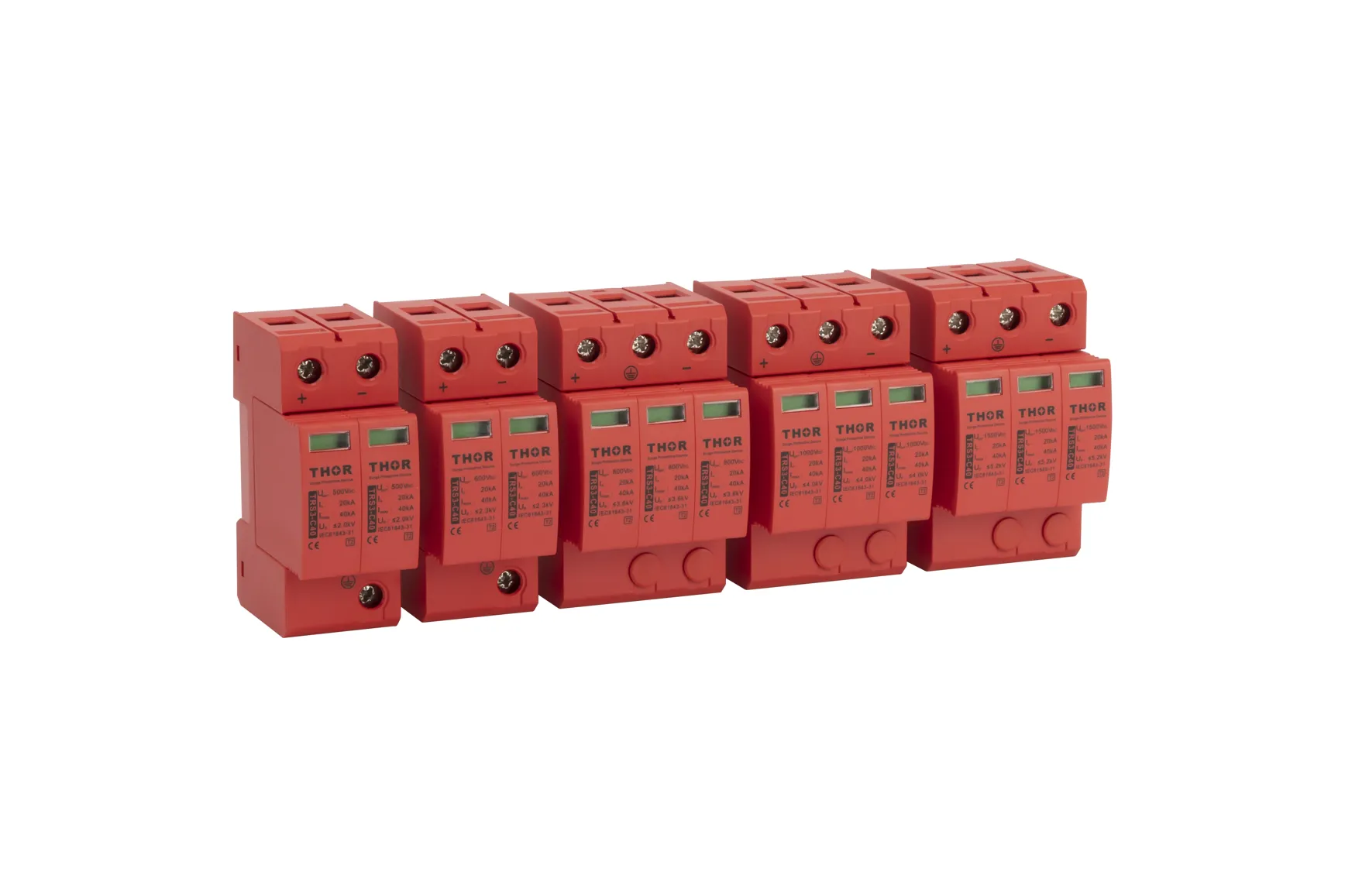What is DC surge protective device?
DC SPDs are used to protect electrical equipment in DC circuits from damage caused by surge fluctuations. DC SPD is commonly used in solar photovoltaic systems, electric vehicle charging stations and other DC power system scenarios.
Why use DC surge protective device?
Reasons for using DC SPD include: protecting sensitive equipment, enhancing system stability, and improving security. Of course, industry standard requirements should also be followed to use DC SPD.
Protect Sensitive Equipment: DC SPDs protect connected electrical equipment by limiting overvoltages and directing surge currents to the ground.
Enhance system stability: DC SPD can prevent voltage surges from damaging equipment, helping to enhance the stability and reliability of the overall electrical system.
Improved safety: Voltage surges can cause arcing, posing a risk to operators and potentially causing fires. Using DC SPD helps reduce such security risks.
How does a DC SPD work?
The working principle of DC SPD is to quickly provide a low-impedance route for the surge current when overvoltage is detected in the DC circuit, allowing it to be directed to the earth through the ground wire, thereby protecting the equipment on the circuit.
Detect overvoltage: DC SPD continuously monitors the voltage on the circuit and is activated when the voltage exceeds the safety threshold. This threshold is based on the operating voltage of the actual circuit and the maximum withstand voltage of the device.
Guide inrush current: Once the voltage exceeds the safety threshold, the protection element inside the DC SPD will quickly change from a high impedance state to a low impedance state (this transition speed is usually at the microsecond level). In this state, the surge current will be directed to the earth and avoid flowing to the equipment that needs to be protected.
Return to normal state: When the surge current is directed to the earth, the DC SPD will automatically return to the high impedance state and the circuit will return to normal. The DC SPD will continue to monitor the voltage on the circuit.
Sometimes a DC SPD will not return to normal, either because the product’s service life has expired, or because the circuit or other equipment was damaged after the last surge event.
Where should the DC SPD be connected?
The location where DC SPDs are installed on the electrical system is critical to effectively withstand surges. The correct installation location depends on the actual application scenario and the layout of the electrical system. DC SPDs are commonly used in solar photovoltaic systems, DC power systems, and other applications that use DC power. Common installation locations for DC SPD are listed below:
At the photovoltaic array: In the solar photovoltaic system, DC SPD should be installed close to the photovoltaic array, closer to the equipment that needs to be protected, to help prevent damage to the photovoltaic panels from lightning strikes or other induced surges.
At the inverter: Installing a DC SPD on the DC input side of the inverter can protect the inverter from surges from the photovoltaic array or other DC power sources.
At the energy storage battery: Install a DC SPD near the energy storage battery pack to prevent surge damage to the battery and charge controller.
At DC load-powered systems: In systems powered by DC loads, installing DC SPDs at the entrance of DC power into buildings and equipment can block surges transmitted from the DC power source.
At the photovoltaic combiner box: In larger photovoltaic systems, multiple photovoltaic panels will be connected in series to summarize the input to the photovoltaic combiner box. Installing DC SPD in the photovoltaic combiner box can prevent the surge of multiple photovoltaic panels from damaging downstream equipment. destroy.
At the distribution panel: The DC system is directly connected to the distribution panel. Installing a DC SPD at this location protects downstream equipment from surges from various sources.
What is the difference between AC SPD and DC SPD?
To adapt to the specific characteristics of AC and DC electrical systems, AC SPD and DC SPD also have specific differences, which are mainly reflected in product design and practical applications. The detailed differences are shown below:
- Electrical system compatibility. AC SPD is used in AC electrical systems, characterized by current and voltage changes in direction periodically. DC SPDs are used in direct current electrical systems where current travels in one direction and voltage polarity is constant.
- Internal components: The design, selection and arrangement of metal oxide varistors (MOVs) used will vary to suit the specific characteristics of each system. In DC electrical systems, MOVs handle unidirectional surges. In AC electrical systems, MOVs need to handle surges in both directions.
- Application requirements: The installation procedures for AC SPDs and DC SPDs are similar, but the actual selection depends on the specific characteristics of the electrical system. AC SPDs are commonly used in domestic and commercial environments such as utility grids and load equipment. DC SPD is commonly used in solar photovoltaic farms, photovoltaic combiner boxes and inverters.

